Thomasin McKenzie tracks Tom’s journey from girl to young woman, increment by increment. This is the seventh piece in our Special Issue on Debra Granik’s Leave No Trace , which is now available as an ebook.
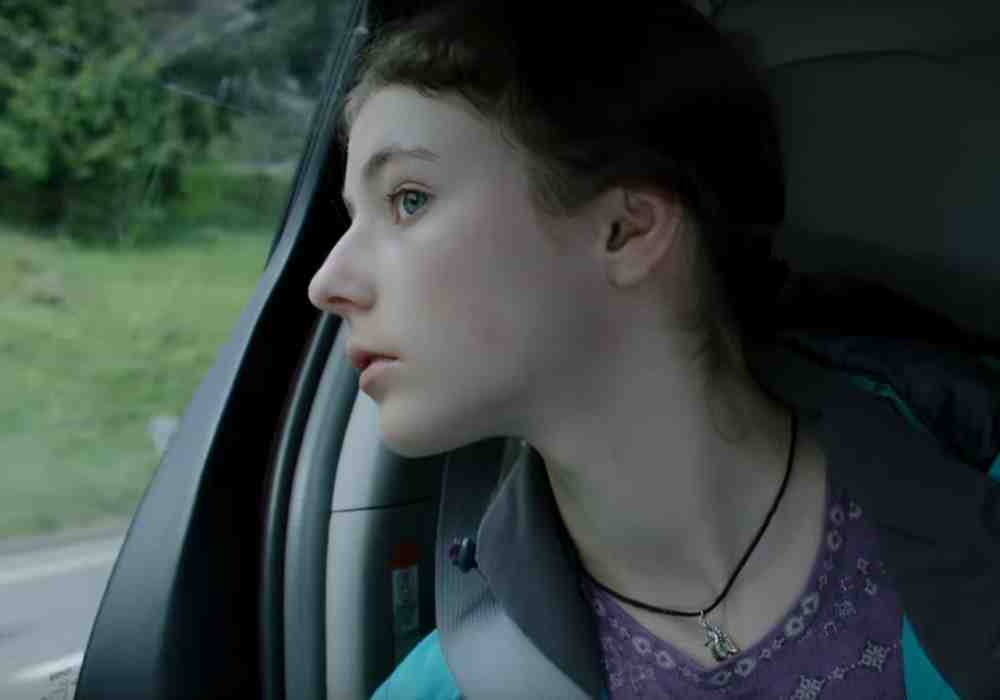
Thomasin McKenzie’s performance as Tom in Leave No Trace beautifully realises the process of coming-of-age: increment by increment, she tracks a girl’s transformation into a woman. Tom grows up in unusual circumstances, living in the woods with her veteran father, Will (Ben Foster). But Debra Granik’s film tracks the same process of parent-child separation that we all go through. As Tom is exposed to the world outside of her father’s orbit, McKenzie shows us all the ways in which Tom grows up: learning social skills, gaining self-confidence, and growing further apart from her father as a result.
An isolated childhood in the forest
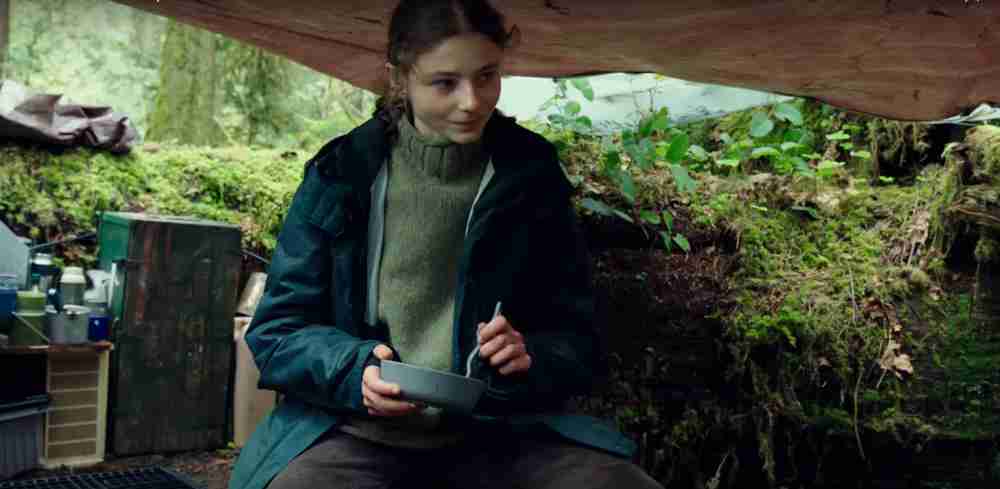
With minimal exposition in Granik’s script, Thomasin McKenzie uses her physicality to communicate Tom’s familiarity with the rituals of the woodland life her father has shaped for her. Tom shows no sense of effort or concentration in the way she finds food, cooks, cleans, or jumps into one of Will’s emergency drills; she has been living in the woods for a long time. McKenzie’s hands work faster than the speed of thought, so we know Tom does this every day — it’s drilled into her bones. She’s obviously very close to Will: when they’re around each other, every one of McKenzie’s movements is a reaction to Foster’s, and she looks to him, as if reflexively, for approval or permission. That deep trust, love, and dependence goes both ways. Without a hint of panic, Tom snaps her father out of a PTSD episode; McKenzie fixes her gaze on Foster and adopts a soft but commanding tone of voice, so that Will feels safe in the knowledge that his daughter has everything under control.
McKenzie brings an intense curiosity to Tom, making us realise that the forest may no longer be enough for a growing girl with such potential. Will restricts his daughter’s contact with the outside world and teaches her not to own material possessions beyond necessity. But when Tom finds a necklace on the side of the road and hides it, McKenzie chooses a cheeky smile instead of betraying any signs of guilt. It’s our first sign that Tom is thrilled by the thought of something more, eager to explore life outside of the sheltered world her father created for her. When father and daughter make one of their occasional, brief trips into the city, McKenzie’s eager eyes lap up anything they land on, and we see just how hungry Tom is for all that she’s missing. Their restless movement is evidence of Tom’s active, curious mind.
Want to read the rest of the article?
Get the Leave No Trace ebook
Relive the highs and lows of Debra Granik’s remarkable coming-of-age story and discover how the filmmakers brought it to life.
Being thrust into society means being thrust into adolescence
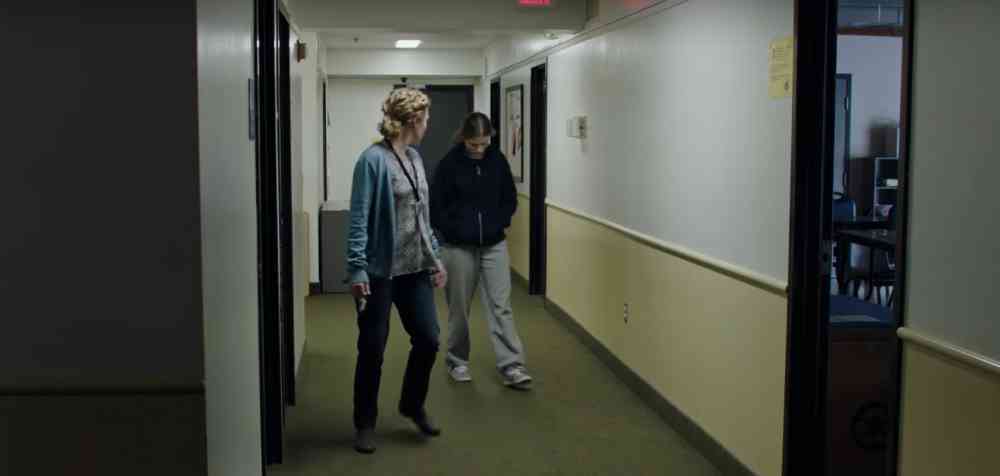
When Tom is finally thrust into the real world, Thomasin McKenzie shows how Tom’s woodland lifestyle has both prepared her to cope with adult life but also left her lacking much-needed social skills. Social services remove Will and Tom to the city to be assessed separately, and McKenzie’s body language dramatically shifts — Tom has never been away from her father before. With no-one to follow, McKenzie turns inward, slumping as she walks through the administrative building’s anonymous, unwelcoming corridors, hands in pockets, head down, for once unsure. When Tom meets and talks to girls of her own age for the first time, she doesn’t know how to act. McKenzie’s eyes agitatedly flit around the room, not knowing where to look, even looking behind her shoulder when Tom talks of her father as if she instinctually expects him to be there. But later, when the social worker assesses her, she takes a similar low, calm, assured tone to the one she uses to calm her father down. Right now, Tom can’t see past her desperation to see Will again, but McKenzie ensures that we know Tom is ready for independence. Taking control comes naturally to her.
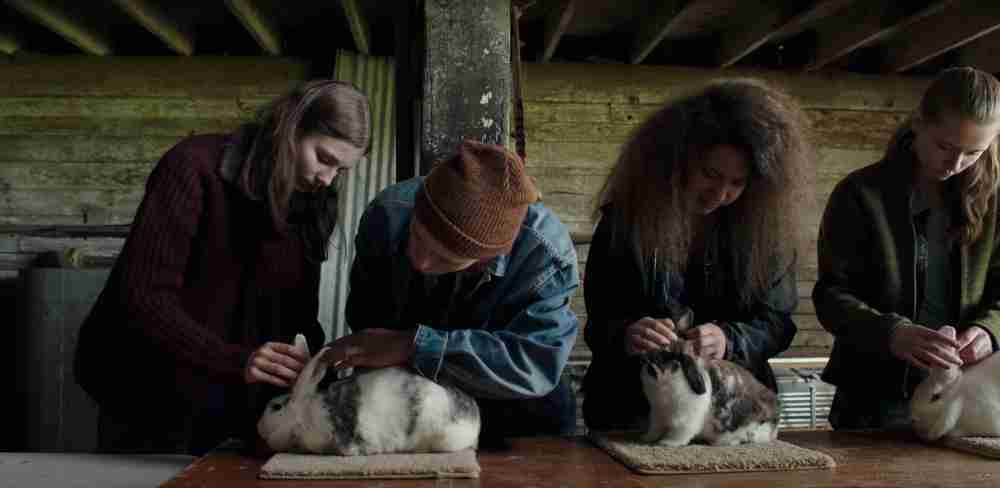
When Tom and Will are thrust into civilisation, McKenzie illustrates what powerful fuel this new environment is to Tom’s spark of curiosity. After moving into a roomy lodging within a community of people, Tom attends a meeting for young aspiring farmers. She stands on the outside of the group, observing with interest, held back by apprehension. Tentatively, though, she starts to get wrapped up in the activity at hand. McKenzie marks this shift from uncertainty to growing self-assurance as Tom becomes completely engrossed in taking care of the rabbit she has been given to practice animal care with. Erasing any signs of self-consciousness, she stops looking at the other teens at the meeting and stares intently at the animal, gingerly stroking it with immense concentration. Having a familiar creature from the woods to focus on allows Tom to avoid too much direct social interaction with her peers, but also helps her begin to feel comfortable being around them.
Tom starts to challenge her father
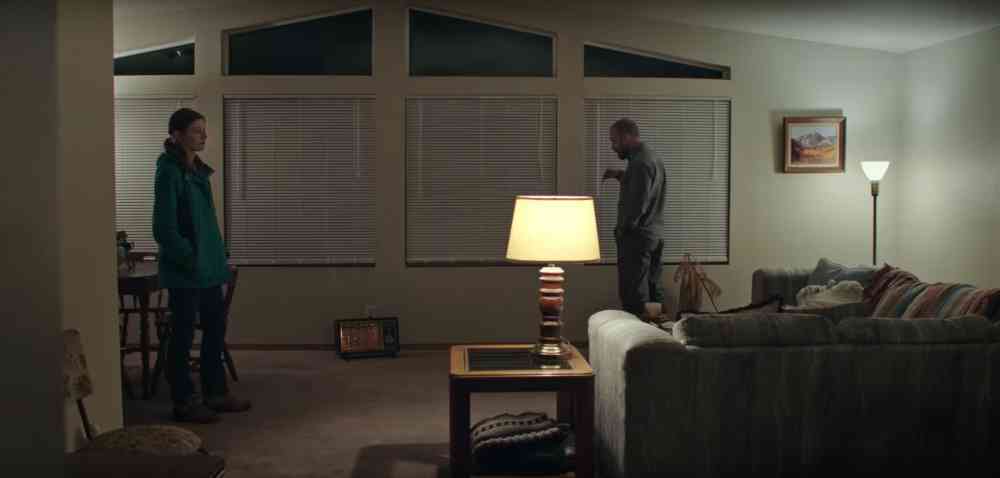
After this moment, Thomasin McKenzie shows Tom lurch into adolescence: after forming social bonds away from Will, Tom is emboldened to finally challenge her father. Will reprimands her for staying out late without telling him — a dilemma that would be solved if he weren’t so resistant to cell phones. Instead of deferring to him, McKenzie shoots him a look of exasperation, which is a first for Tom: she plainly thinks her father is in the wrong. McKenzie rolls her eyes and keeps her hands in her pockets — behaviour recognisable from any teenager’s rebellious stage, when deep dependence on a parent turns to a frustrated desire to become their own person. McKenzie may have gathered close to Foster before, but now she stands her ground at the opposite side of the room. McKenzie shows how much this newfound rebellious streak is confusing for Tom, as she struggles to maintain eye contact, unsure of how to navigate this unfamiliar hostility.
McKenzie’s body language communicates Tom’s growing independence, prising her away from the magnetic force that once held Tom and Will together. Tom wishes to learn more about the world and live amongst other people, but Will stubbornly maintains his isolationist ideals, refusing any compromise Tom attempts to make. When Will sneaks them away from their new accomodation, against Tom’s wishes, she spends the journey looking anywhere but at him. They jump onto a train and Tom’s eyes fixate on the world that’s passing by outside the carriage door, instead of her father sitting by her side. She’s anxious to get back to exploring that world and disinterested in what her father can provide. When she does look at him, it’s with exasperation, now more direct and self-assured than before: “Did you even try? Because I can’t tell.” Coupled with a challenging, unforgiving stare, her question feels like an interrogation, demanding the serious answer of a peer rather than a consoling parent-to-child dismissal.
When Will goes missing, McKenzie makes it evident that Tom is still deeply attached to her father. It’s the first time Tom is left completely alone, waiting for Will to return from a trip to gather food. Despite her previous resentment toward him — she seemed to almost wish he were gone — the reality of being without her father is harsh for Tom, and it pulls her out of her strop. McKenzie constantly shoots wide-eyed looks toward the window and out to the horizon, awaiting Will’s return. These nervous glances interrupt any menial task she completes throughout the day, so we know that Tom can never fully focus on anything without fear of her father invading her thoughts. Yet she stills cooks, keeps herself warm, and lights candles as beacons, all with a steady hand and a measured pace; once again, we’re reminded that Tom is self-sufficient and capable of independence. She’s just not emotionally ready to be without her father — not quite yet.
Coming to terms with her father’s flaws means Tom has grown up
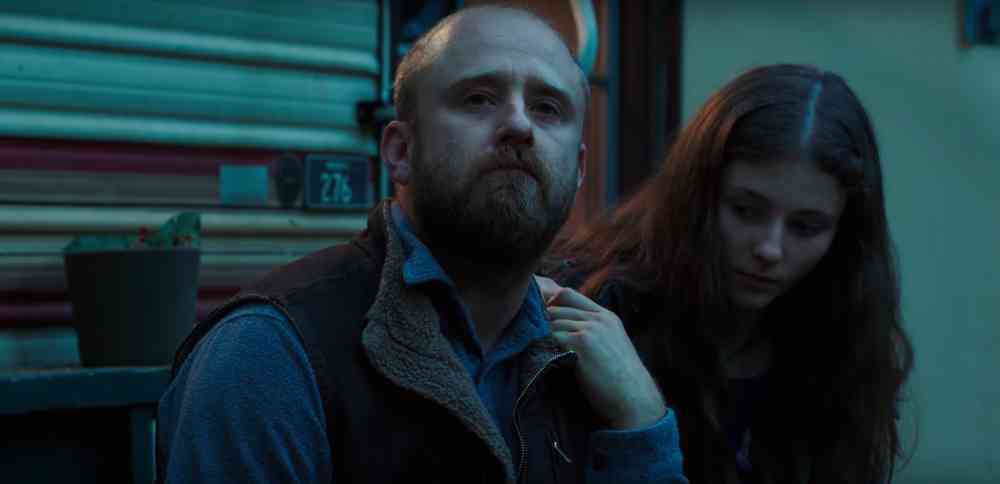
When Tom finds Will, injured, and has to help him recover, she realises her father had been far less in control of the situation than he let on — prompting Thomasin McKenzie to replace hostility with sympathy in Tom’s attitude toward her father. McKenzie stops looking at Foster’s Will with anger and annoyance, and adopts a pitying gaze. Tom is now even more of an adult than her father is. When she admits, “I’m not sure we knew where we were going,” there’s no hint of anger in McKenzie’s tone. She states this as fact, without judgement, and gently: Tom feels such warmth and empathy toward her father. While alone in the cabin, she had discovered his papers and begun to gain a fuller understanding of his debilitating PTSD. She’s no longer angry because she can see past her own pain to fully understand her father’s trauma and how incapable he is of controlling it.
While Will’s trauma leaves him resistant to any kind of compromise, McKenzie shows how Tom begins to recognise the cosier, quainter trailer park that they happen upon as somewhere she could call a home. Armed with greater confidence and independence, she is able to stray from the trailer to which her father confines himself and blaze a trail of her own. She explores this new place, gazing at everything as she did in her first encounters with the outside world — but this time she’s slower, more patient. Tom isn’t racing against the clock to take everything in, because this time, she knows what she wants: she’s determined to have this place as a permanent home. Talking to Tom’s new neighbours, McKenzie shows how much Tom’s social skills have developed; she now has no trouble maintaining eye contact with a stranger. An older woman shows Tom her collection of bees, and McKenzie’s face lights up, conveying Tom’s joy at learning something new in such a hands-on, exciting way.
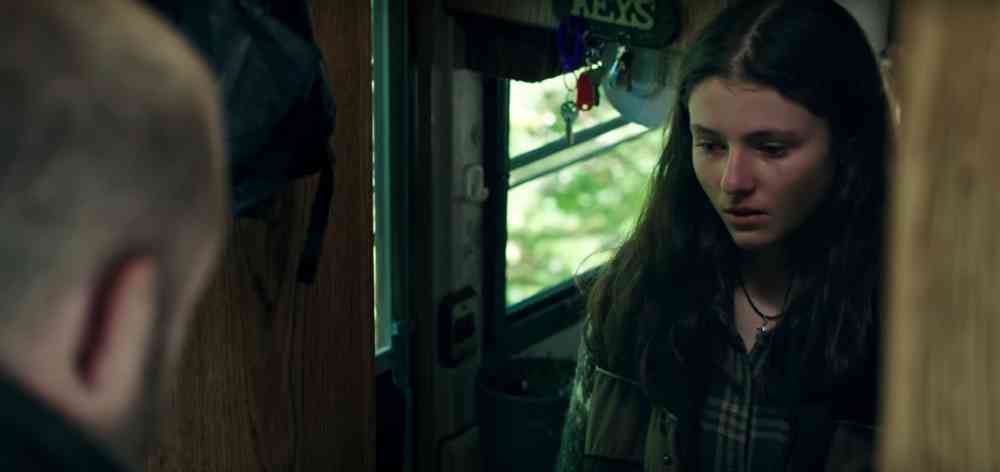
When Tom finally makes the decision to separate permanently from her father, the strength-of-will McKenzie exudes shows us how far Tom has come. When Will insists that the two of them return to the nomadic lifestyle he feels he needs to lead, McKenzie spits out an alarmingly forceful, “You. You need. Not me.” It’s not a question, but a firm, direct assertion. Staring into Will’s eyes with steely conviction — she no longer shies away from uncomfortable eye contact — McKenzie utters the “you” with such force that this is a point of no return: they are no longer an ‘us’, but a ‘you’ and ‘I’. She’s sure of it now — no longer a confused teen working out what she wants, but a young adult staking her claim in the world.
Ben Foster on creating his character in Leave No Trace >>
While Tom does follow her father back into the wilderness initially, out of empathy for Will, she eventually makes the decision to turn back: she makes the final, hard choice to prioritise her own needs over her father’s. Will breaks down when he realises that Tom is leaving, but Tom does not. McKenzie only allows her lip to tremble briefly; despite a desire to cry with her father, Tom keeps her composure, marking her resilience against the doubts that complicate her decision. She’s made a dramatic, life-changing decision — one she would never have made at the beginning of the film. But we believe it, because McKenzie fully realises each step of Tom’s journey from dependent child to self-defined young woman. [/wcm_restrict]
Get the ebook on Leave No Trace >>
More on Leave No Trace
Back when Leave No Trace premiered at Sundance, Editor-In-Chief Alex Heeney wrote a shorter tribute to Thomasin McKenzie’s performance. Both Alex’s essay on Ben Foster’s performance and Gillie Collins’ essay on coming-of-age in Leave No Trace are essential companion pieces to this one (as are all the pieces in this issue).
Other coming-of-age performances
Coming-of-age performances are some of the most satisfying performances to watch: actors can show their range by tracking a relatable and significant character arc. Timothée Chalamet in Call Me by Your Name is a prime example (and we’ll be publishing more writing on him this month!). Josh O’Connor was brilliant in coming-of-ager God’s Own Country; Jack Lowden is an expert in realising this kind of character growth; as is Noée Abita in Léa Mysius’ debut Ava. [/wcm_restrict]

